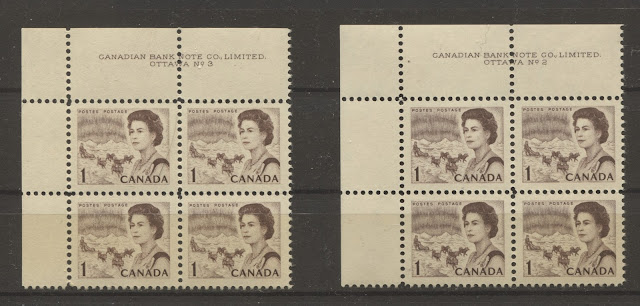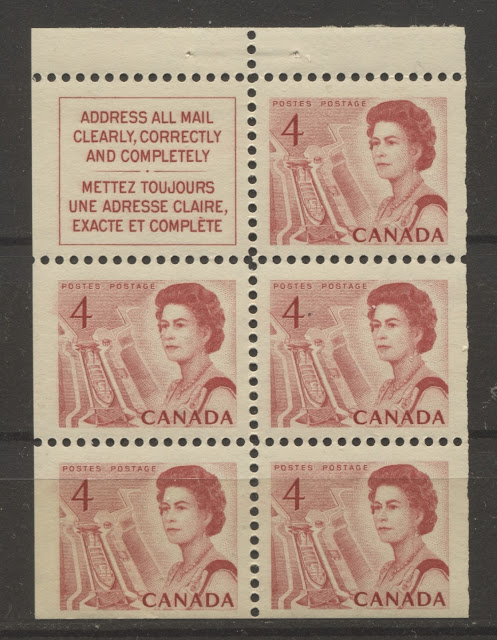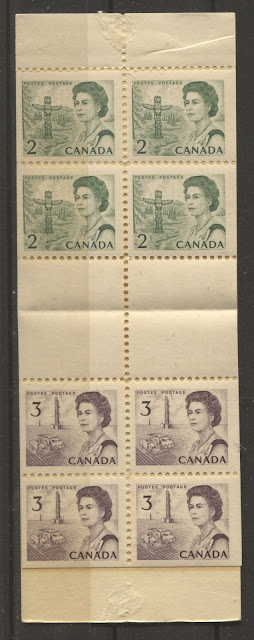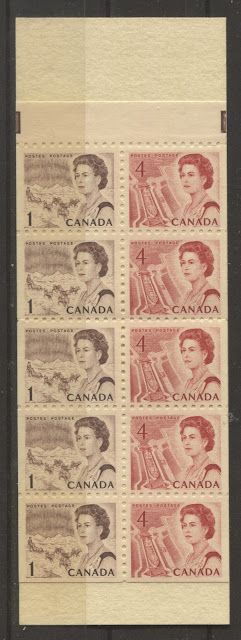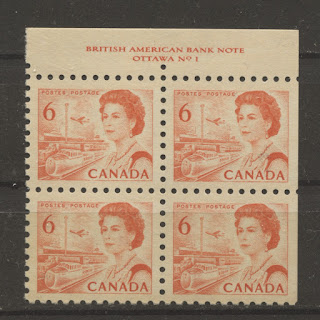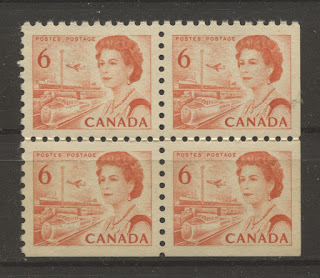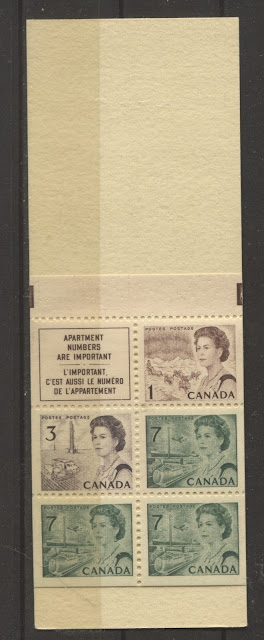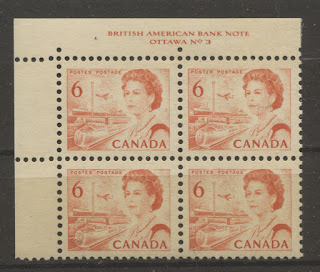Today, I turn to another aspect of this issue that has received little attention from philatelists: the perforations on this issue. Most collectors with a passing familiarity know that five basic perforations exist, but they tend to pay little attention to them, in large part because the stamps with different perforations are often very easily distinguished on the basis of other characteristics. However, as we shall see, there are other aspects to the perforating that should be understood by anyone opting to specialize in this issue, for it is the possession of this knowledge that opens up the possibility of important discoveries being made later.
There are three attributes of perforations that are of interest here:
- Whether the perforations are line perforations or comb perforations.
- What the measurement of the perforations are (i.e. the gauge), and whether there is any significant and consistent variation to be found.
- Whether the perforations extend all the way through the selvage of the sheets, stop at the outer margins of the stamps, or extend 1 or more holes beyond the stamps, but not all the way through the selvage (called extension holes).
As I have explained in earlier posts, the stamps of this issue were printed and perforated by both the Canadian Bank Note Company (CBN) and the British American Bank Note Company (BABNC). Each of these two companies used their own perforating equipment, which produced results that differed in terms of the three attributes listed above. The remainder of this post will examine the perforations of the stamps of this issue for the stamps printed by the CBN and the BABNC.
Comb Versus Line Perforations - General
The above picture shows a plate 1 block of the 1c brown from the upper left corner of the sheet. This block is line perforated. Line perforating is where each row and each column is perforated separately by feeding the sheet through the perforator in one direction first, and then in the other direction. In the case of very early issues each row or column was done individually, and the lines were often not straight, which is why well centered examples of early Canadian stamps are so scarce. However, by the time this issue was printed, it would appear that fewer passes through the perforator were required. However, it would appear that the number was more than 2, because sheets are often encountered in which the alignment of the perforations within the margins does vary, and a single pass through the perforator should, if all the stamps are evenly spaced apart, produce the same degree of alignment within those margins.
Because the vertical perforations and horizontal perforations are not done simultaneously, they will often be double punched where the rows and columns intersect, rather than terminating perfectly at the corners. Notice on this block how the perforations do not terminate in a single hole wherever a row and a column of perforations meet, but instead there are double punched holes. That is the most fundamental characteristic that enables one to tell if a stamp is line perforated. But what about single stamps? Well, the corners of single stamps will appear uneven, and if you take two line perforated single stamps and lay them on top of one another, they will not meet up perfectly, except in rare cases, even though the perforation measurements themselves may be the same.
Now let's look at comb perforating.
Here is a partial booklet pane from one of the early integral booklets printed by the BABNC. This is an example of comb perforating. In comb perforating, the perforating pins are arranged in a comb pattern, often several combs to a sheet. The combs act as a kind of guillotine, which perforates the sheet in one stroke, both horizontally and vertically. Because of this, the rows and columns of comb perforated stamps will intersect perfectly with one single perforation hole. Because the rows and columns are all perforated at once, all stamps perforated by the comb will have more or less the exact same centering. If the sheet is perforated with one stroke, then there will be no variation at all in the centering of the stamps, but if more than one strike of the comb perforator is required to perforate an entire sheet, then of course it is possible to find variation in the centering of stamps from one end of the sheet to another. This can be useful evidence to a specialist who wants to establish how many strokes were required to perforate a particular sheet.
Now that I have explained the difference between comb and line perforating, I can discuss the specifics of the perforations themselves.
CBN Printings
All of the stamps printed by the CBN for this issue, and most issues to the mid-1970's are line perforated. The measurement given for the perforations on the CBN printings is 12 for the sheet stamps, 9.5 horizontal for the 3c, 4c and 5c coils and 10 horizontal for the other coils. The reality is slightly more complicated than this though.
Up until the late 1950's the exact gauge of the stamps printed and perforated by the CBN is known to
be exactly 12.0, but sometime between 1957 and 1959, a new perforator, or series of machines came into use that gave an exact gauge of 11.95. It is not a big difference, and if you are not meticulously careful when using an Instanta perforating gauge, you will miss it. But if you are very, very careful in taking perforation measurements, you will see the difference. Starting sometime between 1961 and 1962, a further replacement of equipment was completed, which this time gave a gauge of 11.85.
According to research done by Julian Goldberg, a Toronto based philatelist, and noted in Unitrade, most of the stamps issued between 1962 and 1963 exist with both perf. 11.85 and 11.95. However, the notes in Unitrade suggest that after 1963, all stamps are perforated 11.85. However, this is not the case. In actual fact, I have found that compounds of these two perforations exist for most stamps until well past 1968. Many, many issues exist with four perforations:
- 11.95 x 11.95
- 11.95 x 11.85
- 11.85 x 11.95
- 11.85 x 11.85
This suggests that some sheets were perforated using two different machines, with the exact gauge depending on whether the horizontal or vertical perforations were made first, and that others were perforated using only one machine. Suddenly, a whole new dimension is added to the collection of stamps from this period for specialists seeking a challenge. A full scale statistical study would be required to establish relative scarcities for each perforation, though my casual observations would suggest that some combinations are indeed scarcer than others.
The scans below show three of these perforations on the 1c brown:
These two blocks are both printed on dull fluorescent paper. The plate 3 block on the left is perforated 11.85 x 11.95, while the plate 2 block is perforated 11.95 x 11.95.
Here is a block printed from plate 4, which is perforated 11.85 x 11.85:
Plate 4 for this value was introduced some time in 1970, and the mottled appearance of the dextrose gum on the back tends to be consistent with this notion. But what about the stamps printed with PVA gum?
Here is a plate 5 block in the reddish brown shade with PVA gum:
This block is perforated 11.85 x 11.85, and was issued in December 1971. Thus it would appear that the 11.95 gauge ceased to be used at all some time between 1970 and 1971, though a rigorous study would have to be completed to establish this beyond reasonable doubt and to establish which perforation combinations exist for each plate.
All of the above blocks show the selvage perforated all the way through in both directions. This is the way that CBN did all their perforating on this issue for both the high values and the low values of this issue.
The 3c, 4c and 5c coils were actually perforated 8.9 horizontally, while the 6c, 7c and 8c coils were perforated 9.9 horizontally. I haven't seen any significant variation in these measurements, through the Instanta gauge is difficult to use accurately once the measurements drop below about 10.5, because there are no vertical lines on both sides of the stamp to help you align the gauge accurately.
The range of booklets that were printed by the CBN is fairly limited, being just three booklets:
- A 25c booklet consisting of two panes of 5 of the 1c and 4c stamps, issued February 8, 1967.
- A 25c booklet consisting of a pane of 5 5c stamps, issued February 8, 1967.
- A 20c booklet consisting of a pane of 4 2c stamps and 4 3c stamps, issued October 1970.
The first two panes are both line perforated 11.95, 11.85 or compounds thereof, and share the same format as shown in the scan below:
As you can see, the vertical perforations extend all the way through the selvage tab. All of the booklet panes that I have seen of this format, have perforations that extend all the way through the selvage like this.
Here is the 1970 2c + 3c Opal booklet:
The selvage on this booklet is fully perforated as well. The gutter separating the two panes is folded horizontally here, but there is a scarce version of this booklet that exists with the gutter perforated where the fold would normally be. Notice how the fold is NOT in the centre of the gutter, but is located closer to the upper edge of the gutter. This is where the perforations will be on those examples of the booklet with a genuine perforated gutter. There are plenty of fakes around that are easily caught by the fact that the perforations are located right in the centre of the gutter.
The high values would appear to exist with the same range of perforations as the low value stamps. It is worth noting that I have found examples of the 10c with PVA gum that were perf 11.85 x 11.95. Given that these were issued in 1972, it appears as though the machines gauging 11.95 were in sporadic use right up to the end of the life of this issue.
BABNC Printings
In contrast to the CBN Printings, all of the perforating done by BABN was comb perforating. There were two basic measurements used, that are known to most collectors:
- 10, which was used for some of the early booklet stamps, and the first printings of the 6c orange sheet stamp, and,
- 12.5 x 12, which was used for the 6c black sheet stamps, the 7c, 8c parliament sheet stamps and most of the booklets produced after 1969.
10 Perforation
This perforation is found on:
- 1c and 4c stamps that came from a 25c booklet that was issued in September 1968.
- 1c and 6c orange stamps that came from a 25c booklet issued in October 1968.
- 4c stamps that were issued in $1 booklets of 25 stamps in January 1968.
- 5c blue stamps that were issued in a $1 booklet containing 20 stamps in August 1968.
- 6c orange sheet stamps and stamps issued in booklets of 25 in November 1968.
- 6c black die 1 stamps that were issued in booklets of 25 in January 1970.
- 6c black die 2 stamps that were issued in 25c booklets of 4 in May 1970.
Careful measurement with the Instanta gauge reveals that the measurement for this perforation is indeed 10.0 exactly.
Here is an example of the 1c+4c 25c booklet from September 1968:
Here you can see that the vertical alignment of the horizontal perforations is the same for all four rows of horizontal perforations, and that the perforation is indeed a comb perforation. This similar alignment suggests that these stamps were perforated with a single stroke of the comb, which is called a harrow perforation. Notice how the selvage at the top contains no vertical holes extending beyond the top horizontal row of perforations. This is where the perforating comb stops and collectors often refer to this type of perforation as "comb with imperforate selvage".
Here is a much larger booklet: the booklet of 25 4c stamps:
Again, the alignment of the horizontal and vertical perforations along all the vertical and horizontal rows suggests that all 25 stamps were perforated with a single stroke, and like the other booklet shown above, this one has imperforate upper selvage as well.
A quick check of the other booklet containing perf. 10 stamps reveals that the upper selvage tabs on all of the booklets are imperforate. But what about the sheet stamps?
The scan below shows a typical plate block of the 6c orange with the 10 perforation:
Here, you can see that the selvage at the sides is perforated all the way through, but the top selvage contains only a single extension hole past the top row of horizontal perforations. A quick check of the lower left and lower right blocks reveals that the bottom selvage only has one single extension hole as well.
These stamps were printed in six panes of 100 stamps arranged 3 panes wide by 2 panes tall. Only those panes at the outer edges contain plate blocks with full selvage like the one shown. The middle panes were separated from the outer panes by guillotine, so that each of the outer panes has one straight edge at either the left or right, and the middle panes will have two straight edges at the sides, when the panes are from philatelic stock.
Here is an example of a plate 1 upper right block from the upper left pane of 100:
Note the single straight edge at the right.
When panes were designated to be field stock (i.e. to be sold only for use as stamps and not to collectors), the top and bottom edges were trimmed instead of being perforated. The width of the margins tends to suggest that the sheets were originally perforated and have been trimmed below the perforations, although occasionally, the margins on both sides of a block are wide enough that it appears as though they could have been trimmed apart and not perforated at all originally.
Here is an example of a lower right block from field stock, showing straight edges at the right and bottom. The margins on both sides are quite narrow, which does suggest that it comes from either the upper centre pane, or the lower centre pane.
12.5 x 12 Perforation
The 10 perforation proved to be far too coarse, and resulted in torn stamps and difficulty separating stamps. It was decided in March 1969 starting with the 6c orange, to use a finer perforation measuring 12.5 x 12. This perforation is found on:
- All of the booklets containing 7c, 3c or 8c stamps and all the 1c and 6c stamps that come from those booklets.
- The 6c orange sheet stamps issued in March 1969.
- The 6c black die 1 and 2 sheet stamps that were issued between January 7, 1970 and April 1970.
- The 6c black die 1 booklet stamps that were issued in panes of 25, in December 1970.
- The 7c emerald green sheet stamps, issued June 30, 1971.
- The 8c slate sheet stamps, first issued December 30, 1971.
Although this perforation is commonly quoted as measuring 12.5 x 12, it seems to be closer to 12.5 x 11.9 on the booklet stamps when I check it with my Instanta gauge. The sheet stamps do seem indeed to measure 12.5 x 12.
The scan below shows an example of a 25c booklet from June 30, 1971, containing the 1c, 3c and 7c stamps:
Again, you can see that this pane appears to have been perforated in one stroke, as the alignment of the perforations shows little variation. In addition, the upper selvage is also imperforate. A quick check of all the booklets produced with this perforation reveals that they all have imperforate selvage at the top. But again, that begs the question of the sheet stamps.
Here is an example of a typical perf. 12.5 x 12 plate block. It is the 6c orange plate 3 from March 1969. As was the case with the perf. 10 block, the selvage at the left is perforated all the way through, while the top selvage has only the single extension hole. What is different though is that if you look at the horizontal perforations, you can see a slight discontinuity where the four holes to the left do not align exactly with the rest of the perforations. This is because those four holes come from a second stroke of the perforating comb, and that the comb that perforated the stamps in the sheet which this block comes from, only extends one hole past each outer row or column of perforations. The only plausible explanation for why there would be a second comb strike is that there was another pane attached to this one on the left, which would mean that this block comes from one of the centre panes. This is odd, because this block has full selvage at the left, which suggests a different sheet layout was used for this perf, which resulted in philatelic stock blocks having wider selvage, regardless of which of the six panes they come from. This would make sense, if the goal was to ensure that any of the 6 panes printed could yield philatelic stock.
However, just as the blocks with the 10 perf can be found with guillotined edges, so too can those perf. 12.5 x 12:
Here are two of the plate 3 blocks, with the left having a single straight edge at the right, which suggests that it comes from the upper left pane, and the other, with two straight edges, suggesting that it is from one of the centre panes.
This concludes my discussion of the perforations of the stamps of this issue. I have now discussed all of the primary physical characteristics of the stamps: the paper, the gum and the perforations, that apply to all stamps of the issue. Next week, I will start looking at the plate characteristics that are applicable to specific values and some of the flaws and constant varieties that can be found on the stamps.




